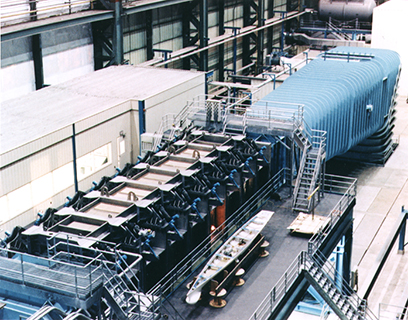 This detachment, located on a 94-acre site on President's Island near Memphis, became part of the David Taylor Research Center (DTRC) in 1988. In 1992, DTRC consolidated with NAVSSES to become the Naval Surface Warfare Center, Carderock Division. This detachment includes a nearly 500,000 square foot industrial facility with a 10-story clear space and associated RDT&E support spaces. This detachment was developed as the operating site for the Large Cavitation Channel.The William B. Morgan Large Cavitation Channel (LCC)
This detachment, located on a 94-acre site on President's Island near Memphis, became part of the David Taylor Research Center (DTRC) in 1988. In 1992, DTRC consolidated with NAVSSES to become the Naval Surface Warfare Center, Carderock Division. This detachment includes a nearly 500,000 square foot industrial facility with a 10-story clear space and associated RDT&E support spaces. This detachment was developed as the operating site for the Large Cavitation Channel.The William B. Morgan Large Cavitation Channel (LCC)
The LCC is one of the world's largest and most technically advanced high-speed, variable-pressure water tunnel facilities. It is capable of testing all types of ship and submarine propellers and propeller-hull interactions with model scales sufficiently large to match the largest towing and turning basins in the world. The tunnel test section has a cross-section area of 100 square feet (10 feet by 10 feet) and can accept models up to 40 feet in length. Its sophisticated design permits the U.S. Navy to measure submarine and surface ship power, efficiency and propeller noise by using models in a controlled but realistic environment.
Operational since 1991, the LCC was designed as a variable pressure, recirculating, cavitation tunnel with a very low acoustic background level. The LCC provides significant cost savings for testing large-scale models of advanced ship and submarine system designs and full-scale torpedoes in a controlled environment. The LCC employs advanced hydro-acoustic silencing techniques for reducing acoustic reverberation introduced by the water flow of the tunnel. Commercial uses of this facility include maritime shipping industry applications.
As a model is held stationary, water flow at speeds up to 35 knots combines with variable pressure to allow simultaneous measurements of propeller cavitation and acoustics from the models propulsion, hull and appendages. This facility is capable of performing tests involving cavitation, force measurement, flow visualization and noise on complete hull-appendage propulsor models, bodies of revolution, surface ships, submarines and torpedoes; open water propeller tests; basic and applied research requiring low background noise levels, large Reynold's numbers, variable pressure and low turbulence levels.
The LCC is a vertical plane, closed recirculating 1.4 million gallon, variable speed, variable pressure, channel with lower half submerged in 2.5 million gallon water-filled trench, plus numerous other acoustic treatment features, 6:1 contraction ratio, aeration/deaeration system, filter system (5-micron), temperature control, stainless-steel shell, models mounted on large removable test top, low turbulence (0.1%). High speed capability up to 50 feet per second. Large test chamber with 10 foot by 10 foot cross-section and a 13.1 meter (43 foot) working length. Pressure in the LCC test section ranges from less than atmospheric to four times atmospheric pressure, the equivalent of water approximately 100 feet deep.
Operating specifications
- Test section pressure: 3.5 to 414 kPa (0.03 to 4 atmospheres, 0.5 to 60 psi)
- Test section velocity: 2.6 to 18 meters per second (5 to 35 knots, 8.5 to 59 feet per second)
- Test section size: 3 meters by 3 meters (10 foot by 10 foot) in cross section and 13 meters (43 feet) in length
- Air content: 10% to 100% saturation
Naval Surface Warfare Center, Carderock Division Detachment
Large Cavitation Channel
3001 Harbor Ave.
Memphis, TN 38113